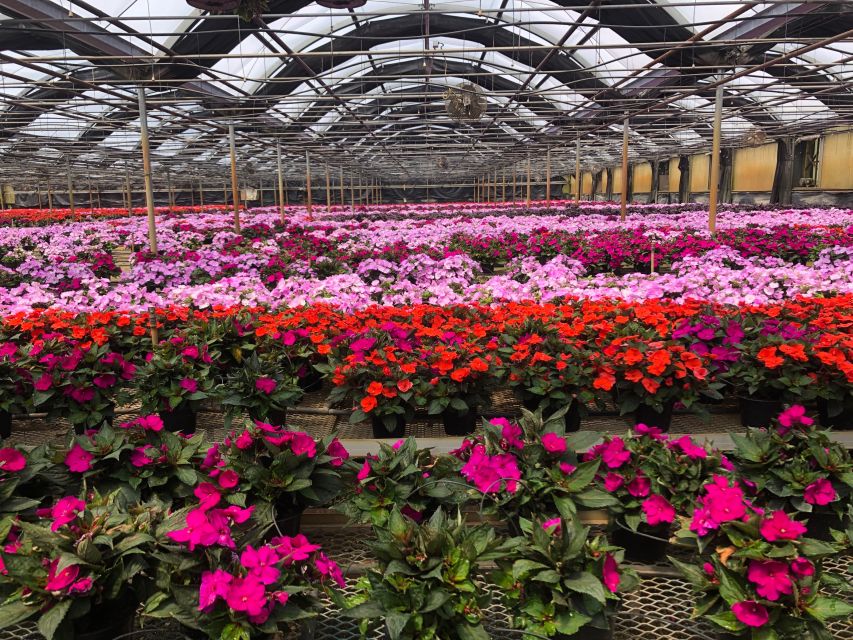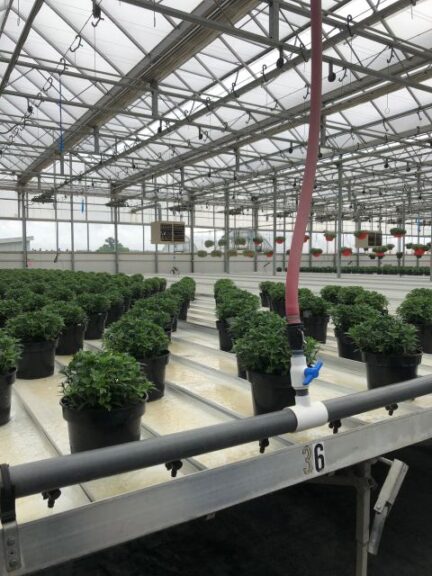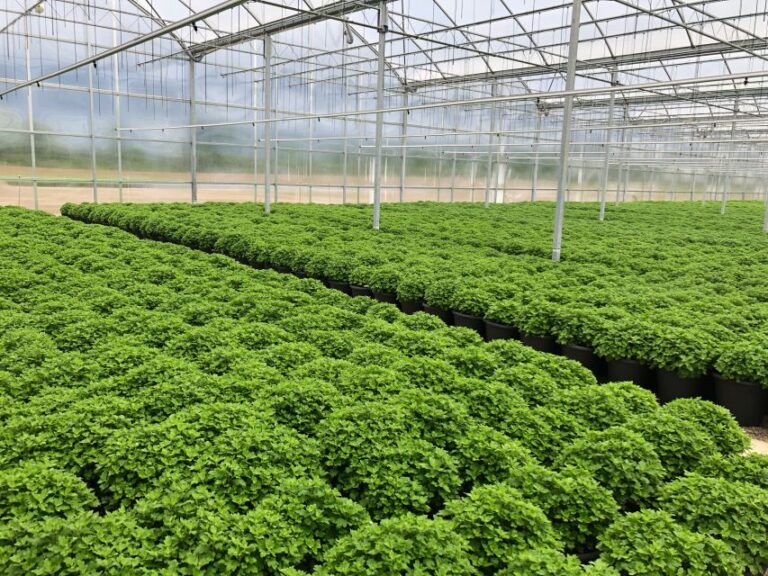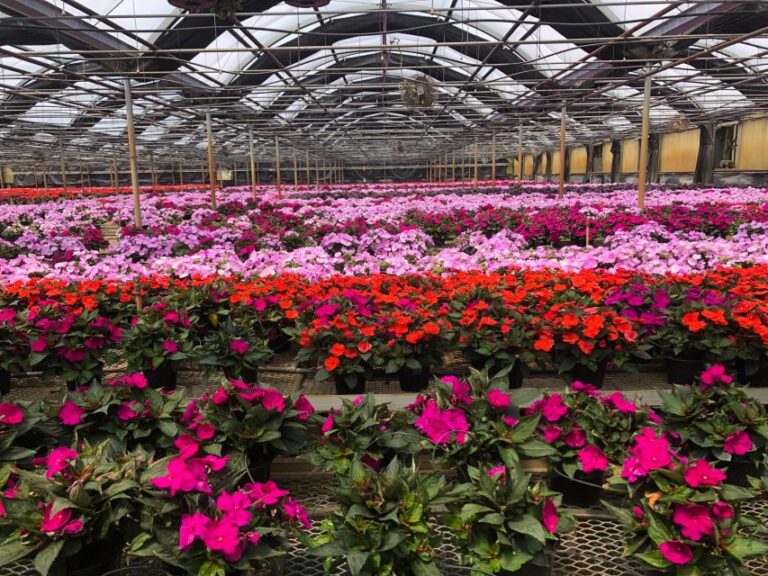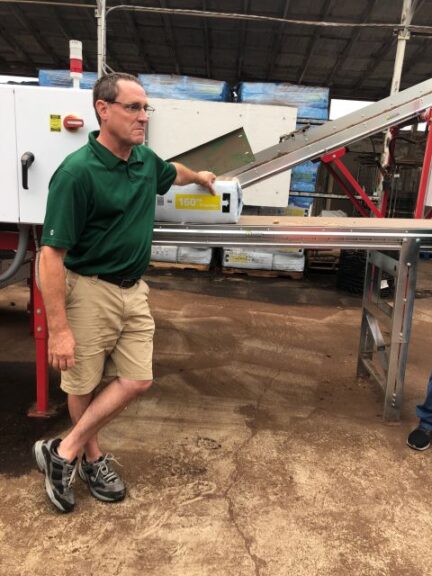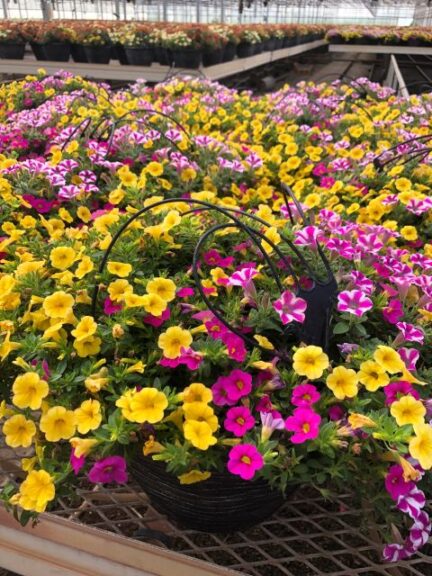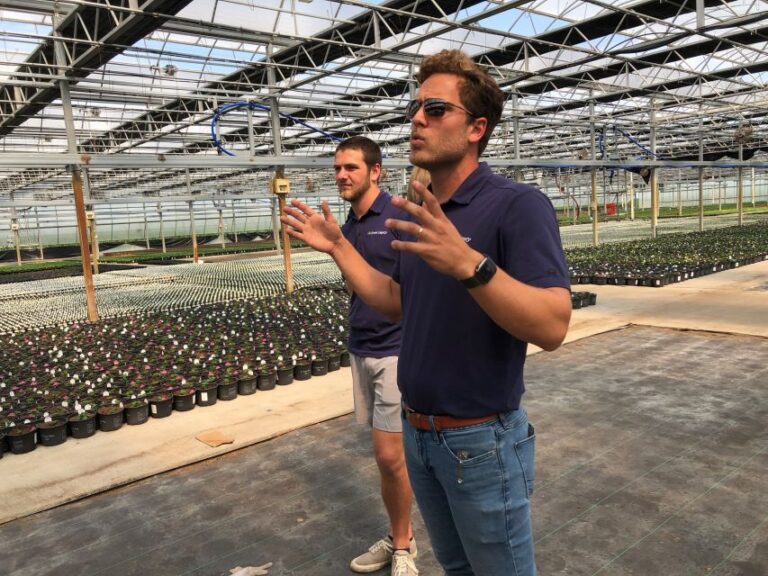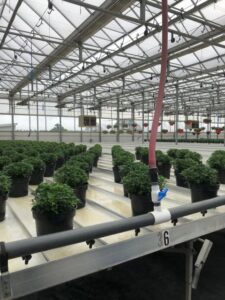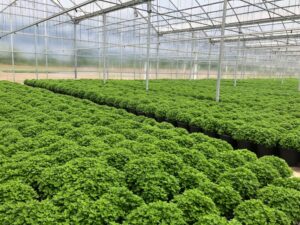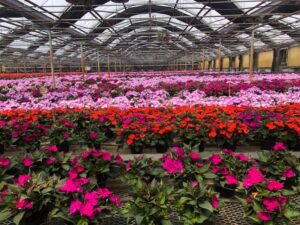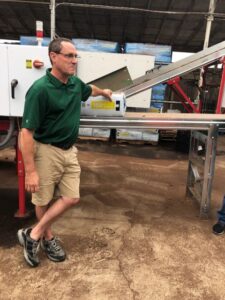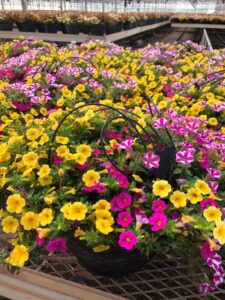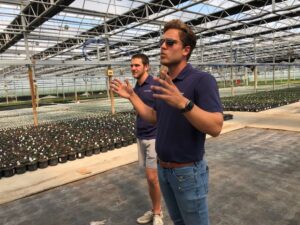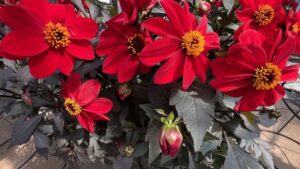How Innovation Drives Success at Columbus, OH-Area Greenhouses
Cultivate’22 kicked off with a greenhouse production tour in the greater Columbus area. The tour featured Foertmeyer & Sons Greenhouse Co., Thorsen’s Greenhouse, Cuthbert Greenhouse, and Green Legacy. At each of these businesses, new technology paired with a great team leads to continued growth and success with their crops.
Foertmeyer & Sons Greenhouse Co.
The first stop on the tour was Foertmeyer & Sons, where the facility sits on a 30-acre property in Delaware, OH. Head Grower Matt Foertmeyer noted that the company has a unique business model: They do not sell to big box stores or independent garden centers (IGCs). Instead, Foertmeyer & Sons supplies school fundraising sales with annuals.
Foertmeyer & Sons purchased the facilities and property of Schmidt Bros. in Swanton, OH, in 2020. The integrated pest management (IPM) program at both locations includes no pesticides, only biocontrols. There is a wholesale division at the Swanton location, where poinsettias are grown for the holiday season. In the summer, Foertmeyer & Sons only grows chrysanthemums.
Matt Foertmeyer pointed out the rolling tables to the guests on the tour, allowing growers to access plants directly without moving the plants or the platform on which they sit. Growers use a sub-irrigation system to water geraniums and lantana so their blooms are not damaged. They also utilize soil moisture sensors to indicate when the plants need to be watered again.
Thorsen’s Greenhouse
The tour group visited a new facility for Thorsen’s Greenhouse, which is 18 acres in size with 90,000 square feet of environmentally-controlled production. Construction began on the new facility in November, and growers started crops in March. They found creative solutions to grow in the spring 2022 season despite the facility not being completed yet, according to Michael Thorsen of Thorsen’s Greenhouse.
Everything grown in the new 90,000-square-foot facility will be sold to Costco. Thorsen’s serves all 13 Costco locations in Ohio, in addition to several in Michigan, Indiana, and Pennsylvania. The facility, which is a DeCloet greenhouse, uses overhead irrigation. The sprinklers use 1.1 gallons of water per minute. Begonia baskets 12 inches in size were grown at the new facility this spring.
Owner Doug Thorsen said all of his children work for the family business, but he requires them to work somewhere else first. By developing skills and experience in a competitive job market, they make Thorsen’s better when they return.
Cuthbert Greenhouse
Cousins Brett and David Cuthbert led the tour group around facilities in Groveport, OH, where they have 535,000 square feet of environmentally-controlled production. David said the business works to expand into a new market sector every year. Recently, it has shifted its focus to producing decorative containers. Davd referred to the containers as “Cuthbert chic.”
David Cuthbert spoke highly of HydraFiber, a wood fiber growing substrate that is mixed with peat moss. He said their mix is about 30% HydraFiber. Growers at Cuthbert have not used perlite for several years, and they are satisfied with HydraFiber instead. David noted the importance of picking up the pots to test the soil moisture because HydraFiber looks the same whether it is dry or wet.
He mentioned a few upcoming changes. Shades in the greenhouses are currently on an automatic setting, but Cuthbert plans to switch to Argus Controls soon. There are also a lot of areas in the greenhouses with cap-and-tube irrigation that will be replaced with Netafim irrigation systems.
Green Legacy
Dan VanWingerden led the tour at Green Legacy, a newly acquired property to supply landscapers with plants. This facility in Orient, OH, will focus on contract growing. He said the soil mix is 40% HydraFiber and the mix is consistent throughout the facility to help all growers obtain the same results with their plants. To lower the pH of the water, nitric acid is injected so there is no white residue on the plants. The facility, which has been under VanWingerden’s ownership for 19 months, currently uses well water but will switch to using water from a nearby pond.
One range is heated by a boiler and the other two ranges are heated by unit heaters. All heat is radiant, VanWingerden said. To maximize their use of the space and minimize material handling, he preferred the plants to be on the ground instead of on tables.
VanWingerden said in the outdoor production area, there were cinderblocks spread around to keep the ground cover down when the weather is windy. They took too much space away from plants, he said, so his team dug a trench, buried and sewed the groundcover, and anchored it to the concrete. This process increased the space available for plants by 30%.





